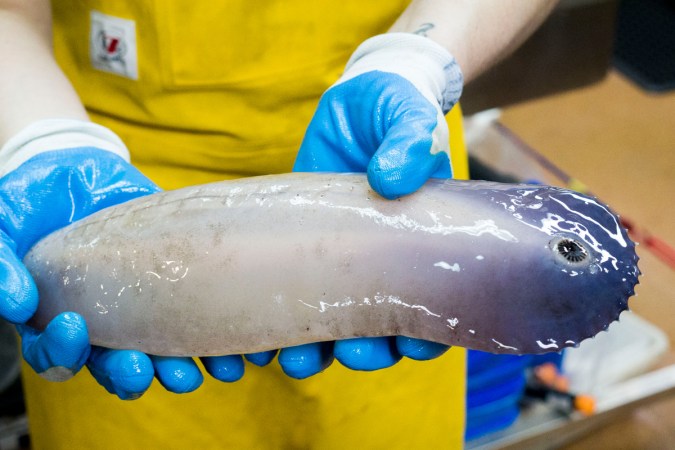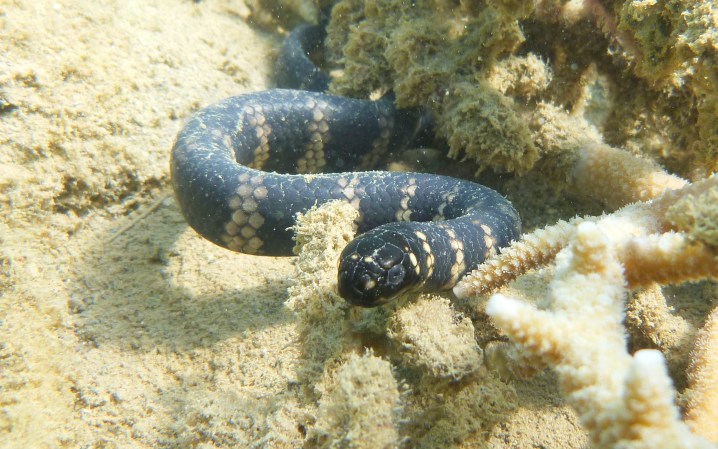

Nothing else in the ocean quite compares to the penis worm. At least until now.
Researchers from Yunnan University and Durham University studying ancient forms of priapulida, or penis worms, found that the fleshy marine crawlers used to live a hermit crab-like lifestyle over 500 million years ago by hiding inside shells they found on the seafloor. Their conclusions were published in Current Biology this week.
Curiously, the penis worms’ squatting strategy evolved before hermit crabs’, which traces back to around 170 million years ago. “There’s very little that these worms have got in common with hermit crabs,” says Martin Smith, co-author on the study and paleontologist at Durham University. “They’ve had to completely independently invent [shell gathering].”
Smith and his partners in China analyzed materials collected over the last decade or so from the Wulongqing Formation in Guanshan, a former seabed that’s famed for preserving soft tissue and hard exoskeletons alike. In particular, the researchers looked at four ancient penis worm specimens that lived in cast-offs from hyoliths, a Cambrian creature with conical shells.

As they inspected the fossil, looking for physical traits that might give them clues on their history, certain features jumped out as evidence that these worms took up residence in the shells. First, the animals fit snugly inside the carapaces, suggesting they were adapting them for long-term homes and not just protection from the elements during breeding season. The animals also were found to have an enlarged posterior region, which would have helped anchor them to the appendages.
“Ultimately, what we came up with was that they were living full-time in the shells just as modern hermit crabs do,” Smith says.
[Related: This “ancient mothership” used probing “fingers” to scrape the ocean floor for prey]
These clues give the researchers a better understanding of the lives of these old-school hermits—modern penis worms no longer wrap it up—along with the ocean more broadly during Cambrian times. The ancient penis worms were likely making complex decisions to find shells that fit them, and upgrade when their homes were getting a bit too cramped. This kind of sophisticated behavior hadn’t been documented among Cambrian creatures before, and is more commonly seen later during the Mesozoic Era. It suggests that the Cambrian Period might have more advanced predators than previously thought.
The discovery also nods to the crab-ification of things, or the way that so many organisms in different ancestral lines end up in shells. Penis worm ancestors may have beat hermit crabs in the race in this case, but plenty of other creatures have evolved to form or borrow exoskeletons to eke out a survival in tough environments throughout history. Smith explains that the repeatability of this pattern on Earth could predict the way life adapts generally under threat from predators.
“You can imagine if we discover life on Jupiter or Mars or elsewhere in the galaxy,” Smith says, “it’s looking like a reasonable assumption that maybe there’ll be alien hermit crabs.”






















